- Administrator
- Albums and Singles
Stelzer/Murray
Connector
Cassette / Digital // HMS045
Release Date: November 17, 2017
https://soundcloud.com/helen-scarsdale/stelzermurray-three
http://www.helenscarsdale.com/published/stelzermurray-connector.htm
Stelzer/Murray is the duo of Brendan Murray and Howard Stelzer, two stalwarts of the Boston noise / experimental scene over the past two decades. Both artists have long been friends and both artists have never shied away from collaborating with avant-garde musicians hither and yon. Yet, this marks their first collaborative work together. Better late than never, we say.
Stelzer brings to the table an array of mangled and partially demagnetized tape; and Murray brings his knack for compacted harmonics, obfuscated field recordings, and long-view compositional strategies. An irradiated, almost Kirlian glow permeates Connector through the duo's slow accretions and erosions amidst the soaring crescendos of compacted tone and vacant shadows of mechanical thrum. On occasion, rasping saw tooth frequencies and oblique synth-noise phrases stridently pop in a clinical opposition against the field of hiss. Screaming cascades from ice storms. Tape symphonies from urban blight. Life-support machines at the point of obsolescence.
In describing the process of building this album, Stelzer reflected, "When you've known someone for this long, the act of collaboration is like conversation over dinner; you don't fuss over it or worry about it; it's stress free, even instinctual like exhaling."
Good things come to those who wait.
Read More
- Administrator
- Albums and Singles
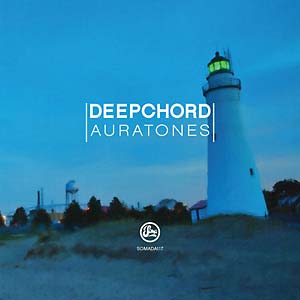
"Deepchord's latest album on Soma, Auratones, sees a return to a more techno sound. A foray into deep, organic, cinematic dance music; subterranean bass, intercepted alien transmissions, and stripped down dance-beats meld with sheets of sounds that roll over the listener like waves lapping up on the shore. Shimmering, watery, brain hemisphere synchronization tones caress and melt stress away. Dancefloor-friendly tracks that work equally well in one's private listening space; immersive music with a distinctive aquatic quality.
Inspired by Detroit and Berlin's dance genres, but tempered by more ambience/atmosphere than one would expect from those genres. Music without harshness or rough edges; Fuzzy, out-of-focus, soft-sounds that slip in and out of the listener's consciousness. Auratones uniquely melds current dance rhythms with lushness and spirituality. Synesthetic sounds that trigger sensory experiences in cognitive pathways other than hearing: smells of perfumes, thoughts of colors, and altered perception of time and space. Psychoacoustic, cerebral, electronic listening music for those wanting a different experience than the current harsher, darker dance trends are offering.
Responsibly made gentle music designed from the ground-up to have a positive effect on the nervous system and leave the listener invigorated and recharged. Chi-building sonic balm. Timeless, exotic dance tracks for a new school of electronic music enthusiasts who are searching for beautiful sounds, crafted with a higher purpose in mind. Recorded during April-June 2016 in Barcelona Spain, then further mixed/processed/assembled in Port Huron Michigan in early 2017."
-via Forced Exposure
More information can be found here.
Read More
- Administrator
- Albums and Singles
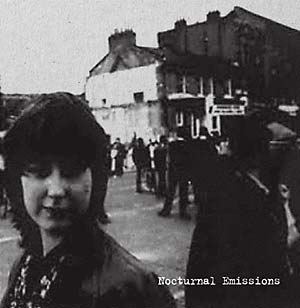
Nocturnal Emissions has been one of the best kept secrets of the industrial genre since the 1970s.
Led by Nigel Ayers, the band was one of the first to use tape cutting, avant-garde art, and underground video works to create a stage experience that was being cultivated by like-mindedartists like Throbbing Gristle and Cabaret Voltaire.
The band moved on to using samplers and electronic noise in their early '80s work, creating a twisted funk sound that would go on to influence everyone from Foetus to Negativland. They still utilized their former tricks, upping the ante with extremist performance art and more professional video displays. The group avoided signing to a major label, instead focusing on releasing their own music more effectively. They followed this path into the '90s when they started Earthly Delights, an incredibly detailed website that promotes their various ideologies (they are strongly against the British monarchy and believe that citizens should have unlimited access to space travel) and constant release schedule. The band has released countless tapes and CDs of their material, and continue to unleash their noise through their website. Nocturnal Emissions is a compilation of classic tracks from the early to mid '80s.
More information can be found here.
Read More
- Administrator
- Albums and Singles

In August this year, Ross Manning opened his first major survey exhibition, Dissonant Rhythms, at Brisbane’s Institute of Modern Art. As part of the exhibition a monograph and LP edition, titled Reflex in Waves, were prepared to celebrate this milestone.
Reflex in Waves brings together a series of sonic approaches Manning has been developing for over a decade. Specifically, Manning’s work is concerned with waves and the impacts of their resulting vibration. Quietly producing audio works out of his studio in Yeronga, on the south side of Brisbane city, Manning's works are based on a series of deeply personal instrument designs, tape manipulation and other exploratory approaches. His instruments, which are often percussive, use harmonically related materials that are activated by motor-driven strings. The resulting sound is a chaotic but pulse-like cluster of harmony.
Developing sets of uniquely pitched materials, Manning's instruments each maintain a distinct quality. No two instruments sound alike and although the way in which they are "performed" may be similar, the resulting sound is anything but familiar.
"I have always been interested in how sound lives in spaces," Ross summarizes. "As I worked on this exhibition, I spent a great deal of time in my studio building instruments and exploring them. I recorded many, many hours of materials in this space and this collection of recordings is very much a summary of my sound practice to this moment."
More information can be found here.
Read More
- Administrator
- Albums and Singles

Synthesizer suites and songs.
Recorded 2016–2017 in Los Angeles.
Moog Source, Korg MS–10, Korg SQ–1, Yamaha SK–10, Sequential Circuits Six–Trak, Modular Synthesizer, delay pedals, manipulated cassette tape, guitar, samples, voice, percussion.
More information can be found here.
Read More
- Administrator
- Albums and Singles
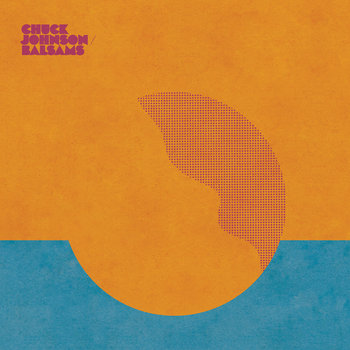
Chuck Johnson's pedal steel guitar debut delivers a group of pieces for ambient meditation. Recorded in a single two-week session during late 2015, and subsequently arranged/constructed/treated in the studio in spring of 2016, Balsams is awash in layers of tonal perfection. The album constantly evolves while maintaining a unified approach across both sides. Balsams is a record that lives outside genre and time, one that continues to develop with each successive deep listen. A unique expansion in the VDSQ catalog, Balsams is an album created in the hopes of providing solace and regenerative energies for many years to come.
More information can be found here.
Read More
- Administrator
- Albums and Singles
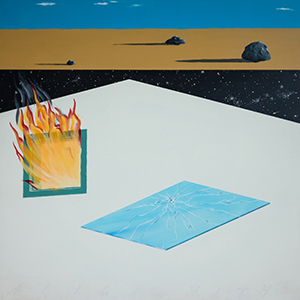 Michael C. Sharp is no stranger to the world of electronic music, being a member of Austin’s psych heavy Sungod. His previous experience, however, has been that of a drummer, which does not at all come through on Never Enough Time. While the five songs on this tape are built largely upon interlocking loops, there is nary a drum sound to be found. Instead it is a rich suite of synth excursions, with a bit of tasteful guitar thrown in for good measure, culminating in an elegant and powerful record.
Michael C. Sharp is no stranger to the world of electronic music, being a member of Austin’s psych heavy Sungod. His previous experience, however, has been that of a drummer, which does not at all come through on Never Enough Time. While the five songs on this tape are built largely upon interlocking loops, there is nary a drum sound to be found. Instead it is a rich suite of synth excursions, with a bit of tasteful guitar thrown in for good measure, culminating in an elegant and powerful record.
Most of the more overtly rhythmic moments come in the form of synthesizer arpeggios and repeating sequences.For "Tape Delay Dichotomy 1" it is initially a pulsating bit of synthesizer that underscores the layered keyboards that later appear.Glistening electronics lead the way, but everything is enshrouded in a pleasant hissy analog haze.In its later moments some echoing percussive bits are introduced, but never does it seem the focus.
On "Pique Pouring Over," sputtering, harsher electronics are the focus, building to a jerky, rhythmic delay that scatters from the overall cavernous mix.Compared to the remainder ofthe tape though, it is far more raw and harsh, making for a nice shadowy alternative to the otherwise polished, gleaming sounds."Never Enough Time", which precedes it, is the perfect antithesis:melodic, sequenced synthesizers, with a complex and layered mix, at times resemble a lullaby with some distinctly prog tendencies.Complex, yet pleasantly sleepy in nature, it is a beautiful song.
The two pieces that bookend the tape, however, are the ones I found to be the strongest."Well-Being" is built from interlocking, pulsating sequences that make for the foundation that Sharp builds upon.Guitar is added on top, a nice and dynamic contrast to the otherwise rhythmic backing track.The two play off of each other well, each one taking the forefront to then retreat throughout.Towards the end the mood shifts a bit darker, and the synthesizers smooth out into more gliding notes, drifting off in a beautiful, tremolo-laden haze.
The concluding "Tape Delay Dichotomy 2" has a more up-front 1980s throwback sound, with echoing, somber keyboards all throughout.Layered, diverse sequences are nicely blended with the dourer synth pads.Again Sharp throws in a bit of guitar, making for a chaotic counterpart to the more motorik electronic sounds and enriching the song very effectively.Eventually the synthesizers build and become the main focus, before swallowing up the entire mix to then fade off in the closing moments.
Michael C. Sharp's first solo excursion is an extremely strong one.I particularly found the subtle use of rhythm an asset, rather than just heavily featuring vintage drum machine beats, resulting in a more unique sound from beginning to end.At times Sharp nudges Never Enough Time toward some new age-y sections, but reins it in before it ever becomes a problem.It is a very well balanced record, with a nice bit of darkness sandwiched within the otherwise glimmering synthesizers, bookended by two complex and diverse pieces.
samples:
 
Read More
- Administrator
- Albums and Singles
 A fitting follow-up to 2015's Only Red, Andy Grant again delivers a strong suite of harsh, aggressive electronics, but with a slightly different mood to it. Anger and frustration still abounds, but it seems to be shaded with a self-aware futility and nihilism that is very fitting and appropriate for the title.
A fitting follow-up to 2015's Only Red, Andy Grant again delivers a strong suite of harsh, aggressive electronics, but with a slightly different mood to it. Anger and frustration still abounds, but it seems to be shaded with a self-aware futility and nihilism that is very fitting and appropriate for the title.
Meditations on Giving Up Completely sticks with Grant's penchant for slow, lugubrious pseudo-rhythms mixed with aggressive electronics and enraged, but heavily processed vocals."What's Left" is a perfect example of this:crunchy, overdriven bursts of noise lead into manic, ridiculously distorted shouting.In some ways it is textbook power electronics, but his use of open space in the mix is extremely effective, making all the harshness hit all the harder, but also giving the sense that Grant’s aggressive delivery is tantamount to an enraged, ranting diatribe delivered to an empty auditorium.
This unconventional inclusion in a well-known approach to noise is a recurring theme throughout the album.Over an especially bleak electronic expanse, Grant introduces an excellent mechanical banging that never relents, soon bringing in his heavily flanged/phased vocals.In this case, however, the volume and dynamics are surprisingly restrained, casting all of this violent aggression in an insignificant, impotent light.The depressive synths and distorted thuds of "There Is Nothing Here" end up feeling similar with its heavy, yet hollow overall sound.
That nihilistic mood to the album does not fully define it though:the dark murk of "It Never Ends" gives the first third a feel somewhere between harsh noise track and unsettling field recordings before he brings in the big, boisterous crashes and vocals, congealing into a wonderfully raw dense wall of sound."When The Last Flame Has Been Extinguished" is a blend of big, thunderous bass thumps and brittle, insect-like buzzing that is soon mixed with feedback and shrill electronics, culminating in a strong blend of low-end rumble and tinnitus squeak.The nearly ten minute closer "Sick Over Trying" is the perfect unfulfilling climax to the album.Surging, but hollow synthesizers and rattling noises lead off, eventually mixed with some tonal dirges to bring the closest thing to melody on this record.Metallically distorted vocals appear at around the half-way mark, and the piece continues on its slow, repetitive lurch until ending flatly.
In a lot of ways, Meditations on Giving Up Completely is the symbolic representation of "if an angry dude is screaming into a distortion pedal but nobody hears it, did it happen?"I think in most cases that would come across as an insult, but that would seem to be the entire point of this album, being seven examples of the banality and futility of macho aggressiveness.Peppered throughout Andy Grant's paean to frustration and nothingness are some really great power electronics moments though, making for a consistent album that is conceptually strong, but is still very powerful divorced from context as well.
samples:
 
Read More
- Administrator
- Albums and Singles
 It is hard to not feel twinges of nostalgia on Marker’s self-titled debut. The stiff drum machine beats, the lush synthesizers and chorus-heavy guitars call to mind a number of bands without ever actually sounding like them, feeling like a fitting devotion to a style without ever trying to copy its most notable practitioners, resulting in a warm, alluring album that has managed to sneak under the radar this year.
It is hard to not feel twinges of nostalgia on Marker’s self-titled debut. The stiff drum machine beats, the lush synthesizers and chorus-heavy guitars call to mind a number of bands without ever actually sounding like them, feeling like a fitting devotion to a style without ever trying to copy its most notable practitioners, resulting in a warm, alluring album that has managed to sneak under the radar this year.
Ok, admittedly it is a bit hard to ignore the Cocteau Twins vibe throughout:a very similar guitar sound, rigid, programmed rhythms, and largely indecipherable vocals.Although in this case, sole member Mike Wilkinson’s words are just often so low in the mix (and bathed in effects) to be perceived almost as just another piece of instrumentation, which works very well within the album’s hazy, gauzy atmosphere and reverb-heavy production.
Opener "Identification of a Woman" encompasses this sound very well:echoing synthesizers lead, later matched with chiming guitar and intentionally stiff beats.Wilkinson's vocals are processed and so far off in the mix to sound more like that of a ghost than anything resembling human.The dirgey pace and melodic bass that propel "What You Do To Me" admittedly resemble The Cure's "Faith" more than just a little bit, but goes in a different direction, becoming (surprisingly) even more morose and depressive as the song goes on.
"Nothing New" is another case where the benefit of a strong, melodic bass lead takes the forefront, with the guitar and keyboards fleshing out the echoing mix.The vocals are far off, but the distinct TR-808 beats (idiosyncratic cowbell and all) make it a standout piece.Flipping things around, "The Memory" has Wilkinson emphasizing the guitar; more melodic than textural this time, and letting the bass take a back seat.The arrangement especially builds nicely, coming into dramatic swells for the chorus.
The vocals are not always so buried, however:on "Now I Know What You Really Think" they are even decipherable at various points, complemented by bigger, heavier rhythms and thick reverb throughout.The same goes for "Pale Silver," where the vocals are more in the foreground, mixed with a bit more distortion on guitar and keyboards, with a nicely chaotic chorus section.
A lot of Marker is a gloomy mope (in a good way), but the few times Wilkinson goes in a slightly more upbeat direction, it stands out powerfully."A Problem With No End" ends up leaning more on the electronics, saturated with a tasteful amount of distortion, with an equal emphasis on the vocals.It is still a bit dour, but its faster tempo makes a significant difference.The same holds true for album closer "Follow It Down":shimmering, unpredictable guitar is balanced out by a more taut rhythm section, and the echoey, expansive vocals ends the album on a more upbeat note.
One shortcoming with Marker's debut is that the atmosphere is almost too strong, making for a record in which songs end up blurring together at times.However, most of the album is strong, making for some very catchy, memorable pieces of gorgeous melodies and rigid rhythms. Considering it is Mike Wilkinson’s first album, however, the strong moments distinctly outweigh the lesser ones, resulting in a wonderful record of electronically tinged shoegaze.
samples:
 
Read More
- Administrator
- Albums and Singles
 This is the debut album from an ambitious project that brings together half of Wire (Matthew Simms and Graham Lewis), idiosyncratic synth supernova Thighpaulsandra, and percussion virtuouso Valentina Magaletti. Naturally, any project where Thighpaulsandra is untethered by someone else's clearly defined aesthetic is destined to be a bit of a stylistic rollercoaster (even more so when Graham Lewis's own eccentricity is factored in), so UUUU is quite a freewheeling and disorienting affair at times, dabbling equally in prog, psych-rock freak-out, drone, krautrock homage, experimentation, and Lewis-style "pop" weirdness. It should also come as no surprise that UUUU's work feels quite spontaneous and improvisatory and occasionally errs into bombast and indulgence. Such moments are largely eclipsed by the times when everything gloriously locks into place, however, as this foursome almost always find a way to wrest some vistas of sublime beauty or flashes of transcendent inspiration from their wild and lysergic free-rock excursions.
This is the debut album from an ambitious project that brings together half of Wire (Matthew Simms and Graham Lewis), idiosyncratic synth supernova Thighpaulsandra, and percussion virtuouso Valentina Magaletti. Naturally, any project where Thighpaulsandra is untethered by someone else's clearly defined aesthetic is destined to be a bit of a stylistic rollercoaster (even more so when Graham Lewis's own eccentricity is factored in), so UUUU is quite a freewheeling and disorienting affair at times, dabbling equally in prog, psych-rock freak-out, drone, krautrock homage, experimentation, and Lewis-style "pop" weirdness. It should also come as no surprise that UUUU's work feels quite spontaneous and improvisatory and occasionally errs into bombast and indulgence. Such moments are largely eclipsed by the times when everything gloriously locks into place, however, as this foursome almost always find a way to wrest some vistas of sublime beauty or flashes of transcendent inspiration from their wild and lysergic free-rock excursions.
Projects such as UUUU are always an unpredictable gamble, as there is generally zero chance that they will ever sound like the sum of their parts: anyone expecting a perfect blend of Coil and Wire combined with a killer drummer is destined for a well-deserved disappointment.Whenever a "supergroup" like this surfaces, it is probably safe to say that they never got to spend nearly as much time together as they had hoped and that no one spent months saving up their best song ideas for the project–everyone is busy and working on other things.The trade-off, however, is getting to hear what some formidable creative minds can pull together when unfettered by the demands of their main gig and what kind of chemistry emerges when several artists with strong visions collide.Unavoidably, the fruits of such unions tend to take the shape of nakedly improvised-sounding jams, a fate that the first few songs here embrace wholeheartedly.They are certainly interesting and unusual ones though, as "The Latent Black Path of Summons Served" combines brooding, nocturnal synth ambiance with clattering and metallic-sounding ritualistic percussion…until the kitschy fretless bass and strangled violins kick in.That bizarre Fourth World avant-jungle funk vibe is short-lived, sadly, as "Black Path" soon erupts into a firestorm of rumbling toms, stuttering electronics, and deranged found sounds.In its last moments, however, it unexpectedly coheres into something that sounds like a deeply hallucinatory vintage horror soundtrack."Partial Response Takes Another Form" is very much a kindred spirit, initially taking shape as kind of a Time Machines-style drone piece awash in simmering feedback; strange insectoid and liquid textures; and ominous monstrous groans before transforming into something that sounds like an understated jazz vamp happening in a volcano filled with dinosaurs.It is a truly bizarre aesthetic, probably best described as "Lustmord, Sonic Youth, and Jon Hassell team up to improvise a soundtrack to a deeply psychedelic (and psychotic) adaptation of The Isle of Dr. Moreau."
With the epic third piece, however, Thighpaulsandra's long tenure in Spiritualized starts to bleed into the proceedings, and the foursome blast into something that sounds like the huge final crescendo of a prog-tinged feast of arena rock excess.That move certainly caught me off-guard, but it turns out to only be the opening salvo of a deeply strange, oft abstract, and unrepentantly kaleidoscopic 16-minute journey.Something amazing happens around the halfway point though, as Magaletti locks into a simmering groove of shuffling snare and clattering metal and Thighpaulsandra unveils a gorgeously dreamlike and swaying synth motif.Rather than just being a fluke moment of lucidity, it ends up becoming the foundation for a sublime and eerily beautiful space-rock interlude that any psych band would kill for.More importantly, a completely different album starts to emerge once I have passed through the grandiose pomp of the "Five Gates" (which naturally builds to one more explosive arena rock crescendo before finally winding down).The first and biggest surprise is that "Boots With Wings" is an actual structured song, albeit quite a harsh and deranged one, resembling one of Graham Lewis's more outré "pop" solo excursions bolstered with a heavy bass line, visceral industrial percussion, and wild squalls of electronics and mangled jazz motifs.Later, "Verlagerung, Verlagerung, Verlagerung" is initially even more structured and song-like, but the vocals turn out to be a mere prelude to an extended faux krautrock jam of motorik grooves and radiant, burbling synth noodling.
The remaining pieces are not quite as immediately striking, but the entire second half of the album is cumulatively a very strange trip down a rabbit hole indeed.For example, "It's Going All Over The Floor" gradually transforms from some kind of mutant Fourth World reggae into a coda of abstract machine noise, while "The Princess Anne Love Cassette" begins as a half-ominous/half-tender bit of ghostly understated drone…then erupts into an impossibly dense and muscular strain of ‘80s-style art-funk (think "Ministry doing a pummeling Japan cover").The final "Il Ventre Del Nulla" is yet another surreal curveball, unleashing a howling storm of guitar noise over a throbbing bed of dense and seething synths that resembles a cathartic noise-rock freak-out over a cult ‘80s horror movie sound track.In a perverse way, that finale is oddly perfect, simultaneously embodying and explaining the UUUU aesthetic: this foursome is like a giant grotesque monster that devours esoteric strains of underground music, then spews them back out in radically altered form.I certainly have no problem with that, but I do wish UUUU had more of a tendency to let their better ideas stick around longer or perhaps even form their own self-contained songs.I suspect that no one involved is particularly interested in that though, as UUUU seem to be entirely about the joy of discovery and the alchemy of order unexpectedly blossoming from chaos.That aesthetic certainly has its own appeal, but it makes for a challenging, messy, and sometimes exasperating listening experience.It is also quite a unique one though, so listeners amenable to an eccentric and voluminous outpouring of unfiltered experimentation and exploration will likely find UUUU's bizarre trajectory to be quite an absorbing one.
 
Read More
- Administrator
- Albums and Singles
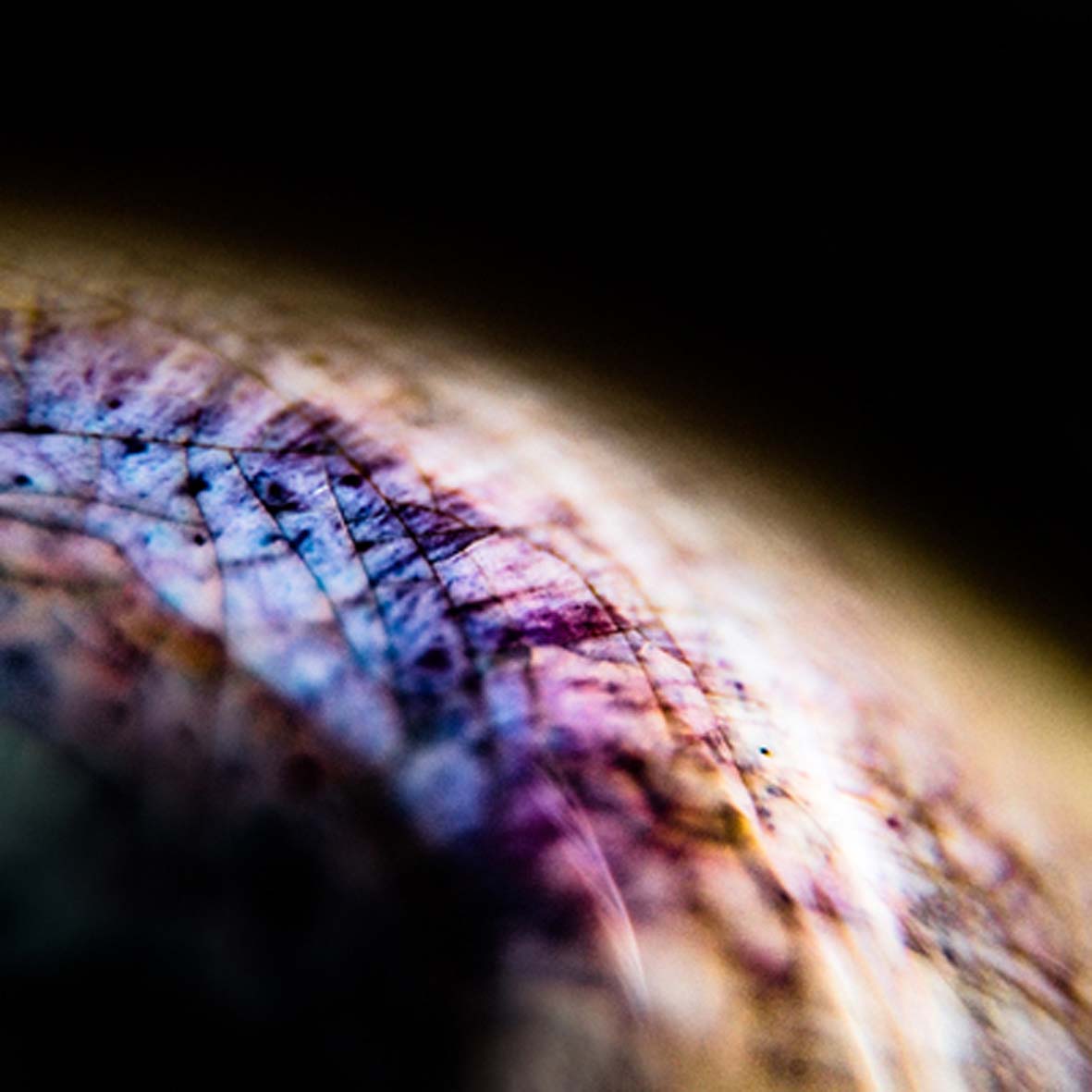 This latest EP is something of a daring experimental coda to this year’s excellent Borders, as studio wizards James Ginzburg and Paul Purgas attempt to translate their crushing, frequency-saturated onslaught into purely acoustic recording techniques. Obviously, there has been a lot of foreshadowing throughout the duo’s career hinting at this direction given Emptyset's longstanding fascination with architecture and natural resonance, but it was not until Borders that the essential missing piece was added to the formula: the viscerally biting snarl and rattle of a homemade zither. Given that Skin further constrains an already hyper-constrained vein of minimalism, this EP is primarily just for existing fans eager to see how well Ginzburg and Purgas handle pushing their vision to a seemingly self-sabotaging extreme, but a few of these simple variations survive the transformation with quite a lot of raw power intact.
This latest EP is something of a daring experimental coda to this year’s excellent Borders, as studio wizards James Ginzburg and Paul Purgas attempt to translate their crushing, frequency-saturated onslaught into purely acoustic recording techniques. Obviously, there has been a lot of foreshadowing throughout the duo’s career hinting at this direction given Emptyset's longstanding fascination with architecture and natural resonance, but it was not until Borders that the essential missing piece was added to the formula: the viscerally biting snarl and rattle of a homemade zither. Given that Skin further constrains an already hyper-constrained vein of minimalism, this EP is primarily just for existing fans eager to see how well Ginzburg and Purgas handle pushing their vision to a seemingly self-sabotaging extreme, but a few of these simple variations survive the transformation with quite a lot of raw power intact.
Any serious discussion of Skin has to begin by noting that Emptyset are willfully plunging into a stylistic cul de sac from which there is absolutely no escape without some considerable reinvention: Ginzburg and Purgas have taken minimalism so far that they have stripped away all melody, almost all rhythm, almost all harmony, and any possible kind of compositional arc.What remains is essentially just the textures and overtones that can be generated from reverberating metal strings and their surrounding acoustic environment.Naturally, this puts Emptyset in similar territory to that of artists like Alvin Lucier and Ellen Fullman, but with a massive key difference: Purgas and Ginzburg have no interest in exploring the shifting, slowly evolving microtonal harmonies that giant buzzing strings can conjure up in a longform drone piece, opting to instead traffic in condensed and punchy displays of wall-shaking force.Skin sounds like what Fullman might have done if she had toured The Long String Instrument on bills with Motörhead for a few weeks and had bottles hurled at her head.The opening "Skin I" is the strongest distillation of that "punk minimalism" aesthetic, as it sounds like two people violently strumming the same one-note bass line on vibrantly buzzing and rattling strings.Initially, it is just a jangling textural assault, but gradually one of the strings is bent, creating some menacing-sounding harmonies.The real magic happens in the background, however, as a cloud of low-frequency tones slowly begins to shudder and distort while ghostly harmonics form unexpected patterns.It is a very cool and deceptively subtle trick that I suspect would be especially stunning in a live environment where I could actually feel the room and the air itself vibrate and transform as the undercurrent gathered power.
There is only so much that can be done with a homemade zither and a kick drum though, so the rest of this brief EP is devoted to exploring the limited spaces not already covered by "Skin I.""Skin II" reprises the slow-motion bass drum pulse of its processor, but eschews the frenzied and kinetic strumming for a single, slowly repeating chord that gradually produces an oscillating haze of overtones.Unfortunately, the piece is under 3 minutes long, so it is more of a "check out this trick!" experience than an actual satisfying composition."Eye I" is more a significant divergence for Emptyset, as an obsessively strummed single chord is joined by ritualistic-sounding vocal chanting that eventually coheres into something that resembles a stomping and lurching occultist procession.The closing "Eye II" is unsurprisingly more of the same, but with more of a rolling feel.It blossoms into something a bit more than mere variation in its second half, however, as a sneaking quake of blown-out-sounding sizzle creeps into the lower frequencies.More than any other piece, "Eye II" highlights the fundamental difficulty with Skin: if listened to casually, this EP basically just sounds like someone endlessly strumming a single string for 20 minutes with some minor variations in attack and rhythm.Also, the songs seem to end rather suddenly and arbitrarily without particularly going anywhere new.That is not necessarily a terrible thing, as there is plenty of activity lurking beneath the surface, but Skin is definitely a release that demands both volume and active, focused attention from listeners in order to be enjoyable.In a live setting, both of those prerequisites are guaranteed and there is probably an accompanying seismic, multisensory component to boot, but a recording simply is not the optimal presentation for what Emptyset are doing here.Unfortunately, a recording is the only way that most people will get to experience the duo's unique approach to sound art.
Skin's degree of success is far more interesting than its limitations however, and I have to admire Emptyset’s unwavering commitment to experimentation and ceaseless exploration.On purely musical terms, a release like this seems like a quixotic and questionable move after the wide release and creative breakthrough of Borders, but viewed on a purely artistic level, it is obvious that Emptyset HAD to take this detour before they could start planning their next frontier to conquer.That is the essential caveat for Skin: it is not the next evolution from the pummeling tour de force of Borders, but rather an appealing amuse-bouche that captures Purgas and Ginzburg performing some modest feats of sonic prestidigitation without the safety net of their usual studio enhancements.
 
Read More

